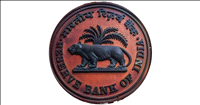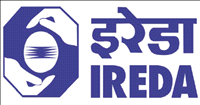The Central Silk Board (CSB) under the ministry of textiles and the ministry of agriculture and farmers welfare on Sunday signed a memorandum of understanding (MoU) on a convergence model for implementation of agro-forestry in the silk sector under the ongoing Sub-Mission on Agroforestry (SMAF) Scheme.
Speaking at the function, union minister for textiles and women and child development, Smriti Zubin Irani said the and Minister of State for Agriculture and Farmers Welfare, Shri Parshottam Rupala here today. The MoU was signed by Dr. Alka Bhargava, Additional Secretary, DAC&FW and Shri Rajit Ranjan Okhandiar, Member Secretary (Central Silk Board), Ministry of Textiles.
The MoU aims at incentivising the farmers to take up sericulture-based agroforestry models thereby contributing to `Make in India and Make for the World’ vision of Prime Minister Narendra Modi. The linkage will add another dimension to agroforestry for faster returns to the growers as well as support the production of the range of silks that India is famous for.
The Central Silk Board (CSB) will act as a catalyst to promote agroforestry in the silk sector. The Buniyaad Reeling Machine for Tussar Silk Yarn were also distributed to some of the beneficiaries on the occasion. The beneficiaries also shared their experiences virtually from across the country.
Speaking on the occasion, union minister for textiles and women and child development, Smriti Zubin Irani said India will be fully `Atmanirbhar’ (self-sufficient) in silk production in the next two years. She said that raw silk production in the country has increased 35 per cent in the last six years. The minister informed that more than 9 million people have got employment in raw silk production.
Addressing the ‘National level programme on convergence of Agro-Sericulture and eradication of Thigh reeling’ where the MoU was signed, Irani informed that 8,000 women thigh reelers were identified for providing Buniyaad machines and 5,000 women have already been supported under Silk Samagra Phase I. She said that for remaining 3,000 thigh reelers, fund provision has been made in order to eradicate unhygienic and obsolete Thigh Reeling practice from the country.
The minister further stated that the MoU will help increase agricultural income from 20 to 30 per cent. Referring to the PPE kits, in which India has become the second largest producer in the world, she said India has the capability of creating history in Agro-Technical Textiles also. She said farmers’ income has almost increased 60 per cent by adopting Agro Technical Textile.
She said that consumption of agriculture based technical textile will increase by involving Krishi Vigyan Kendra in creating awareness about agro-tech and technical textiles, which will lead the way for creation of new products.
The Department of Agriculture, Cooperation and Farmers Welfare (DAC & FW) is implementing the Sub-Mission on Agroforestry (SMAF) since 2016-17 as part of the recommendations of the National Agroforestry Policy 2014. India was the first country to have such a comprehensive policy which was launched at the World Agroforestry Congress held in Delhi in February 2014. At present, the scheme is being implemented in 20 states and 2 UTs.
SMAF encourages farmers to plant multi-purpose trees together with the agriculture crops for climate resilience and additional source of income to the farmers, as well as enhanced feedstock to inter alia wood-based and herbal industry. Hence there is a concerted effort to include medicinal, fruits, fodder, tree borne oil seeds, lac host etc in addition to the longer rotation timber species. The initiative of formalising the collaboration in the sericulture sector is especially targeted for augmentation of sericulture host plants, eg, Mulberry, Asan, Arjuna, Som, Soalu, Kesseru, BadaKesseru, Phanat, etc to be cultivated both as block plantations and border or peripheral plantations on farm lands. Planting sericulture based tree species on farm bunds and rearing silkworms has the potential of creating additional income opportunities to farmers besides their regular source of income from agriculture activities.






























